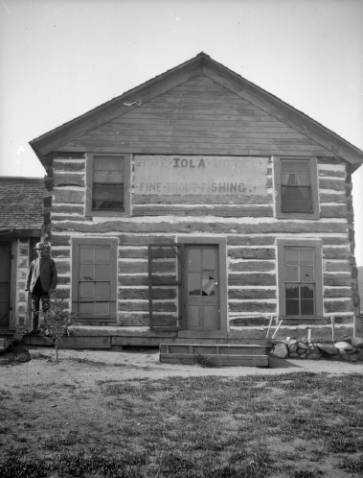53 minutes and 45.7 miles east of Montrose via US-50 E, is the Blue Mesa Reservoir, the largest lake within Colorado state lines.
Blue Mesa Reservoir spans 20 miles and boasts over 96 miles of shoreline. Anglers are likely more impressed with the type of fish in the Blue Mesa water than the water’s size: Rainbow trout, Brown trout, Sockeye salmon and Lake trout. The two, however, go hand in hand, the size of the water and the variety of fish.
Blue Mesa Reservoir was created by the construction of Blue Mesa Dam, a 390-foot tall earthen fill dam constructed on the Gunnison by the U.S. Bureau of Reclamation in 1966 for the generation of hydroelectric power.
The Blue Mesa Reservoir near Gunnison on the Curecanti National Recreation Area , is only 39 percent full. According to Colorado Public Radio in late 2018, the last time water levels were this low was in 1987. The Gunnison River Basin is known for some of the best fly fishing in the world. Anglers say the fishing is still good, although due to low water levels, Blue Mesa Reservoir is virtually a whole new lake and the fish are hanging out in different areas than prior years.
But it’s what’s under that great big fishing pond is even more fascinating. The water has dropped 80 feet from its fullest level revealing the extinct town of Iola that’s been under water since the 1960s when the dam was built. Located on the upper end of the lake, it may be the only one of the four towns that were flooded over that will reappear.
Two hundred to three hundred citizens were displaced by the reservoir over the 10 years it was built and filled. Some survivors of Iola’s fate have come around lately to walk the place they grew up, where families lived for four generations before having to make way for progress. A post office called Iola was established in 1896, and remained in operation until 1963. Photos online at History Colorado are limited. A few, like the one here, capture life in Iola. A man in a hat with a round crown and a sack coat stands in front of a two-story hewn-log building with chinking, which has a sign that reads, "Iola Fine Trout Fishing" under the gable roof.
A string of fishing resorts including Trout Haven Resort, Rippling River Resort and the Elkhorn Resort were also flooded. The fatefully named Neversink Resort met an ironic end. When the town thrived, the D&RG (Denver and Rio Grand Railroad) brought fishermen to this part of the state, supposedly including President Herbert Hoover. Colorado Public Radio’s Nancy Lofholm reported that 10-15 foundations from the town’s general store, the Big Little Store, and other homes and businesses in Iola have surfaced from the muck. The concrete that used to hold the school flag pole marks where the children of this town were educated. Rusted metal tools have emerged from the ground in no particular order.
Anglers come to this destination water looking for kokanee salmon and trophy lake trout, as well as stocked rainbow trout and wild brown trout. Kokanee have rebounded since 2013 as well as lake trout. Increased lake trout conditions should result in improved opportunities for anglers to catch larger trophy lake trout.
The water is fishable winter and summer. Ice fishing shelters must be portable. Kokanee snagging is permitted November 1-December 31. Bag and possession for lake trout is unlimited for lake trout up to 32 inches; one fish over 32 inches. Bag limit for kokanee is 5 fish and possession is 10 fish. Bag limit for cutthroat, brook, brown, and rainbow trout is 4 fish with possession limits of 8 fish.
If you want to make a day of fishing the Blue Mesa, Montrose Anglers will get you set up. Come on in and we will steer you in the right direction, maybe you can even do a little archeological tour of Iola while your at it.

